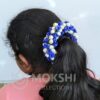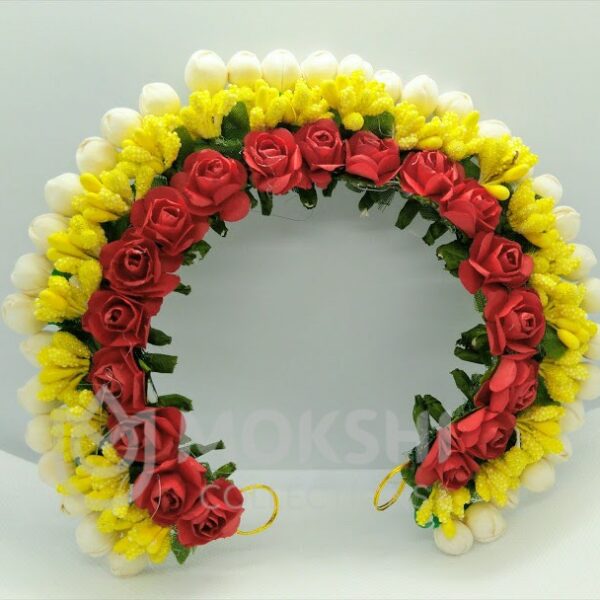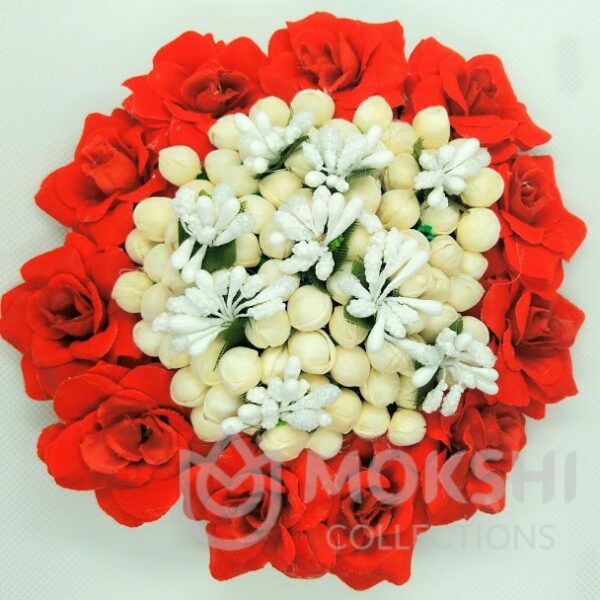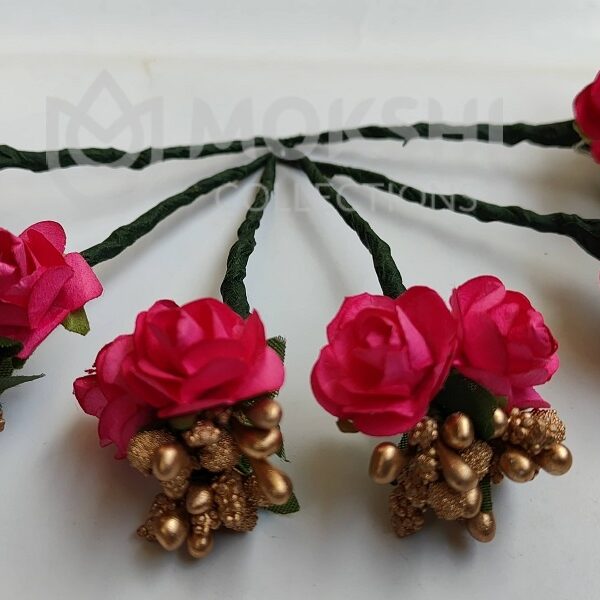Description
Product Details:
- It has 1 piece of Blue Flower Mogra Gajra
- It’s a Reusable product
- It can be worn on any occasions
- Made with Artificial Flowers
Blue Flower Mogra Gajra: An Exquisite Fusion of Tradition and Innovation
The “Blue Flower Mogra Gajra” is a stunning representation of how traditional artistry can harmoniously blend with modern creativity. Gajras, traditionally worn in South Asian cultures, especially in India, have long been symbols of beauty, grace, and cultural heritage. Typically made from fragrant jasmine flowers (mogra), these floral adornments are deeply ingrained in the traditions of weddings, festivals, and other significant ceremonies. However, the introduction of the Blue Flower Mogra Gajra is a testament to the evolving nature of traditional crafts, infusing them with contemporary aesthetics and fresh appeal.
Origins and Traditional Significance
Gajras, also known as “Jasmine garlands,” have a rich history in South Asian culture. The jasmine flower, or mogra, has been revered for its delicate fragrance and symbolic representation of purity and love. Traditionally, mogra gajras were used to enhance the beauty of women, particularly during auspicious occasions. They were worn as hair adornments, draped around braids or buns, and symbolized elegance and sophistication.
In weddings, gajras played an essential role, often worn by brides as a sign of their transition into a new phase of life. The jasmine flower’s pristine white color also symbolized new beginnings and purity. Similarly, during religious and cultural festivals, gajras were used as offerings to deities, further emphasizing their sacred significance.
Introducing the Blue Flower
The concept of the Blue Flower Mogra Gajra brings a modern twist to this traditional art form. While jasmine flowers are typically white, the introduction of blue flowers—whether through natural or dyed methods—adds a unique and striking element. This innovative approach combines the traditional charm of mogra with the bold, contemporary appeal of blue hues, creating a fresh and eye-catching accessory.
The blue flower mogra gajra can be made using various methods. One common technique involves dyeing the jasmine flowers in shades of blue. This process requires careful handling to maintain the flower’s delicate nature while achieving vibrant, lasting color. Another approach is to blend blue artificial flowers with natural mogra, creating a harmonious combination of traditional and modern elements.
Aesthetic Appeal
The Blue Flower Mogra Gajra stands out for its aesthetic beauty. The vibrant blue flowers juxtaposed against the classic white jasmine create a visually captivating accessory. This color combination not only adds a touch of modern sophistication but also makes the gajra suitable for a variety of occasions beyond traditional settings.
For weddings, the Blue Flower Mogra Gajra can complement modern bridal attire, adding a splash of color to the traditional ensemble. It can be paired with outfits in various shades, from deep blues and purples to contrasting colors like gold and silver. This versatility makes it a favorite choice for brides looking to make a statement while honoring their cultural roots.
In everyday wear, the Blue Flower Mogra Gajra can transform a simple hairstyle into a stylish statement. It adds an element of elegance and creativity, making it a perfect accessory for casual outings, parties, or even professional settings where a touch of personality is appreciated.
Cultural and Artistic Fusion
The Blue Mogra Gajra represents more than just a fashion accessory; it symbolizes the fusion of cultures and artistic expressions. By integrating a traditional element with contemporary design, artisans and designers bridge the gap between the past and the present. This creative approach not only keeps traditional crafts alive but also adapts them to modern tastes and preferences.
The introduction of such innovative designs also encourages artisans to experiment and explore new possibilities. It fosters a dynamic environment where traditional skills are preserved while evolving to meet contemporary demands. This fusion enriches the cultural landscape, offering a fresh perspective on age-old practices.
Craftsmanship and Sustainability
Creating a Blue Flower Mogra Gajra requires meticulous craftsmanship. Artisans must skillfully handle the flowers to preserve their beauty and integrity while applying dyes or incorporating artificial elements. This process often involves a blend of traditional techniques and modern technology, ensuring high-quality results.
Moreover, sustainability is an important aspect of producing these gajras. Many artisans prioritize using eco-friendly dyes and materials to minimize environmental impact. This commitment to sustainability ensures that the beauty of the Blue Flower Mogra Gajra does not come at the cost of ecological balance.
Conclusion
The Blue Flower Mogra Gajra is a brilliant example of how traditional artistry can evolve to reflect contemporary aesthetics while honoring its cultural roots. By infusing the classic mogra gajra with vibrant blue flowers, this innovative accessory celebrates both heritage and modernity. Its aesthetic appeal, versatility, and the artistry involved in its creation make it a cherished adornment for a variety of occasions. As traditions continue to adapt and blend with new influences, the Blue Flower Mogra Gajra stands as a symbol of cultural continuity and creative evolution, beautifully bridging the past and the present.










Reviews
There are no reviews yet.